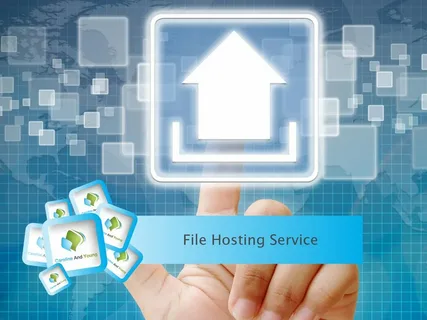
Microsoft’s file-hosting servics stands at the forefront of modern data management, offering users a seamless platform for storing, sharing, and collaborating on files and documents. At the heart of this service lies a sophisticated sharing system, designed to facilitate collaboration among teams, streamline workflows, and ensure data security. In this introduction, we delve into the intricacies of Microsoft’s file-hosting servics and explore how its sharing system revolutionizes the way individuals and organizations interact with their digital assets.
Table of Contents
Maximizing Productivity: Exploring Microsoft’s File-Hosting Service and its Sharing System
Introduction:
In today’s digital age, efficient data management and seamless collaboration are crucial for businesses and individuals alike. Microsoft’s file-hosting servica, often referred to as OneDrive, SharePoint, or Azure File Storage, offers a comprehensive solution for storing, sharing, and collaborating on files and documents. At the core of this service lies a robust sharing system, which plays a pivotal role in facilitating teamwork, enhancing productivity, and ensuring data security. In this comprehensive guide, we will delve into the features, functionalities, and best practices of Microsoft’s file-hosting servics and explore how its sharing system can empower users to maximize their productivity.
Understanding Microsoft’s File-Hosting Service:
Overview of Microsoft’s file-hosting servics, including OneDrive, SharePoint, and Azure File Storage.Explanation of cloud-based storage, file synchronization, and accessibility across devices.Discussion on the integration with other Microsoft applications such as Word, Excel, and PowerPoint.
Exploring the Sharing System:
Detailed explanation of the sharing system within Microsoft’s file-hosting servics .Different methods of sharing files and folders, including direct sharing, link sharing, and permission settings.Overview of access levels and permissions, such as view-only, edit, and full control.

Collaborative Workflows and Productivity:
Benefits of using the sharing system for collaborative work among teams and departments.Real-world examples of how businesses leverage the sharing system to streamline workflows and increase efficiency.Discussion on real-time editing, commenting, and version control features to enhance productivity.
Security Measures and Data Protection:
Overview of security features implemented within Microsoft’s file-hosting servics .Explanation of encryption, two-factor authentication, and data loss prevention mechanisms.Compliance with industry standards and regulations to ensure data security and privacy.
Customization and Integration:
Options for customizing the sharing system to suit organizational needs and preferences.Integration with third-party applications and services to enhance functionality and usability.Scalability options to accommodate growing storage needs and user base.
Best Practices and Tips:
Practical tips for optimizing the use of Microsoft’s file-hosting servicsand its sharing system.Guidance on setting up access controls, managing permissions, and monitoring file activity.Recommendations for ensuring data integrity, backup, and recovery procedures.
Training and Support:
Availability of training resources, documentation, and user guides to help users navigate the file-hosting service and its sharing system.Access to technical support channels, forums, and communities for troubleshooting and assistance.Importance of ongoing training and education to maximize the benefits of the service.
Conclusion:
Microsoft’s file-hosting service and its sharing system represent a powerful tool for modern businesses and individuals seeking to streamline their workflows, enhance collaboration, and protect their valuable data. By understanding the features, functionalities, and best practices outlined in this guide, users can harness the full potential of Microsoft’s file-hosting service to drive productivity and achieve their goals in an increasingly digital world.
In conclusion, Microsoft’s file-hosting service, coupled with its robust sharing system, stands as a cornerstone of modern productivity and collaboration. Throughout this comprehensive exploration, we have uncovered the multifaceted capabilities of this platform and how it empowers users to work smarter, not harder.
One of the most striking aspects of Microsoft’s file-hosting service is its seamless integration with other productivity tools, such as Word, Excel, and PowerPoint. This integration fosters a cohesive digital ecosystem where files can be easily accessed, edited, and shared across devices and platforms. By breaking down silos and promoting cross-functional collaboration, organizations can accelerate decision-making, drive innovation, and achieve greater efficiency in their operations.
Moreover, the sharing system within Microsoft’s file-hosting service offers unparalleled flexibility and control over data access and permissions. Whether it’s sharing files with colleagues, collaborating on projects with external partners, or providing clients with access to relevant documents, the sharing system enables users to tailor access levels to meet specific needs and requirements. This not only enhances security and data protection but also fosters a culture of transparency and accountability within organizations.
As businesses continue to navigate the complexities of remote work and distributed teams, the role of Microsoft’s file-hosting service becomes increasingly paramount. Its cloud-based infrastructure enables seamless remote access to files and resources, ensuring that teams can stay connected and productive from anywhere in the world. Moreover, the real-time collaboration features embedded within the platform enable teams to work together as if they were in the same room, driving productivity and innovation even in virtual environments.
Looking ahead, it is evident that Microsoft’s file-hosting service will continue to evolve and adapt to meet the ever-changing needs of the digital workforce. As technology advances and new challenges emerge, Microsoft remains committed to delivering innovative solutions that empower individuals and organizations to achieve more.
In essence, Microsoft’s file-hosting service and its sharing system represent more than just tools; they are enablers of transformation, catalysts for growth, and drivers of progress in an increasingly interconnected world. By harnessing the power of these technologies, businesses and individuals alike can unlock new opportunities, overcome obstacles, and realize their full potential in the digital age.

FAQs about Microsoft File-Hosting Service and Sharing System:
1. What is Microsoft’s file-hosting service, and how does it work?
- Microsoft’s file-hosting service, often referred to as OneDrive, is a cloud-based storage platform that allows users to store, access, and share files from any device with an internet connection. It works by syncing files and folders across devices, enabling seamless access to documents, photos, videos, and more.
2. Is Microsoft’s file-hosting service secure?
- Yes, Microsoft’s file-hosting service employs robust security measures to protect user data. This includes encryption of data both in transit and at rest, multi-factor authentication options, and compliance with industry standards and regulations such as GDPR and HIPAA.
3. How does the sharing system within Microsoft’s file-hosting service work?
- The sharing system allows users to share files and folders with others, granting them various levels of access and permissions. Users can specify whether recipients can view, edit, or comment on files, and can also set expiration dates for shared links to control access.
4. Can I collaborate in real-time with others using Microsoft’s file-hosting service?
- Yes, Microsoft’s file-hosting service supports real-time collaboration on documents using Office Online applications such as Word, Excel, and PowerPoint. Multiple users can work on the same document simultaneously, seeing each other’s changes in real-time.
5. Can I access Microsoft’s file-hosting service on mobile devices?
- Yes, Microsoft’s file-hosting service is accessible on mobile devices through dedicated mobile apps for iOS and Android, as well as through web browsers on mobile devices. Users can view, upload, download, and share files on the go.
6. What integration options are available with Microsoft’s file-hosting service?
- Microsoft’s file-hosting service seamlessly integrates with other Microsoft 365 applications and services, such as Outlook, Teams, and SharePoint. This integration allows for streamlined workflows and improved productivity across the Microsoft ecosystem.
7. Can I restore previous versions of files using Microsoft’s file-hosting service?
- Yes, Microsoft’s file-hosting service includes version history functionality, allowing users to view and restore previous versions of files within a specified timeframe. This feature is particularly useful for recovering from accidental changes or deletions.
8. How much storage space do I get with Microsoft’s file-hosting service?
- The amount of storage space available depends on the subscription plan. For individual users, Microsoft typically offers a certain amount of storage for free, with additional storage available for purchase. Business and enterprise plans often include more generous storage allocations.
9. Is there a file size limit for uploads and downloads on Microsoft’s file-hosting service?
- Yes, Microsoft’s file-hosting service imposes file size limits for uploads and downloads, which may vary depending on the user’s subscription plan and other factors. Users should check the service’s documentation for specific details regarding file size limits.
10. Can I access files stored on Microsoft’s file-hosting service offline?
- Yes, Microsoft’s file-hosting service includes offline access functionality, allowing users to sync files and folders to their devices for offline viewing and editing. Changes made offline will sync back to the cloud once an internet connection is reestablished.
 Nextezone: Igniting Tomorrow's Potential with Innovation Today Innovate. Explore. Elevate. Nextezone – Where Vision Meets Innovation.
Nextezone: Igniting Tomorrow's Potential with Innovation Today Innovate. Explore. Elevate. Nextezone – Where Vision Meets Innovation.